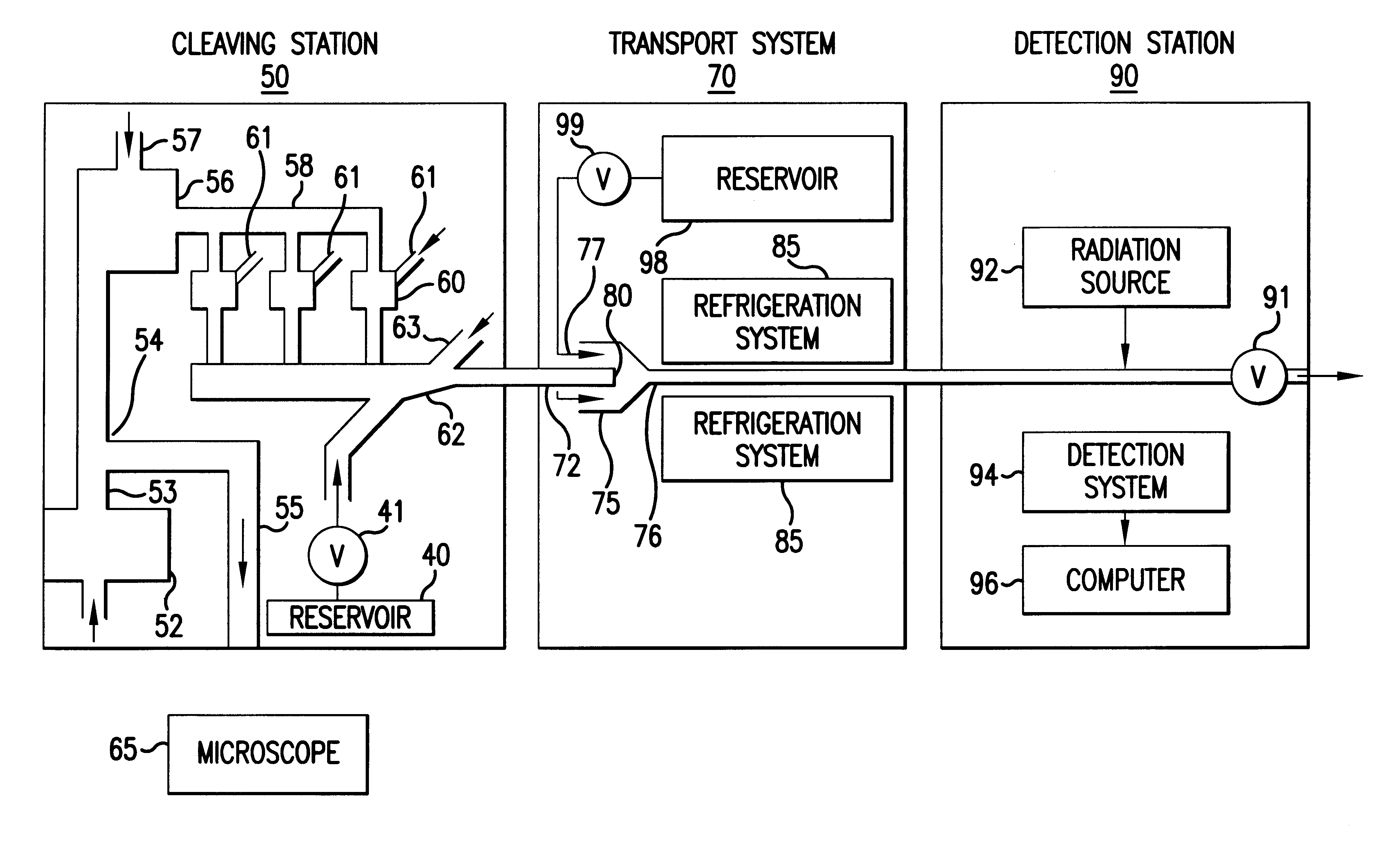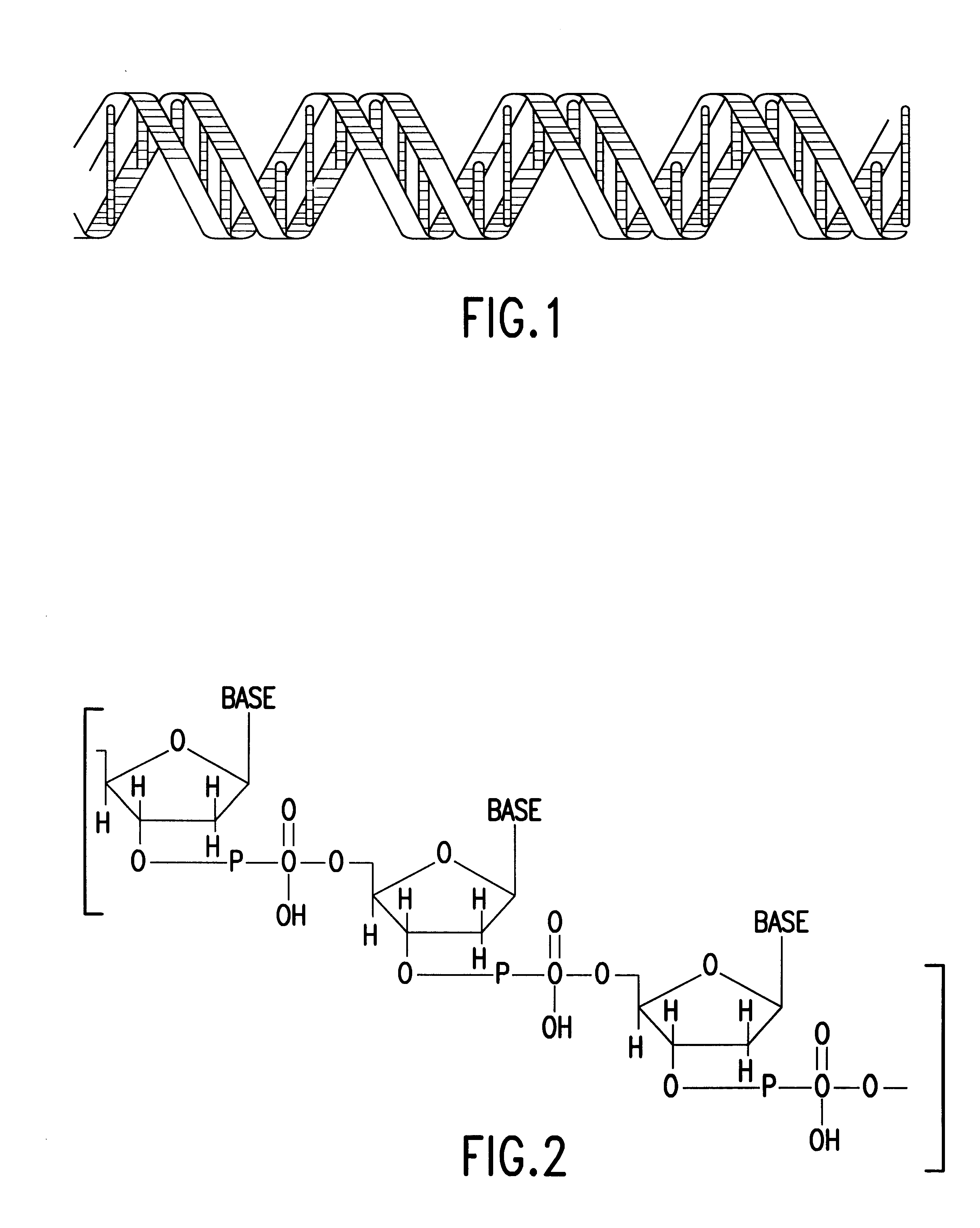Apparatus for DNA sequencing
a technology of dna sequencing and apparatus, which is applied in the field of apparatus for dna sequencing, can solve the problems of destroying the ability of the enzyme to further elongate the dna chain, and most of the human genome remains unexplored. it achieves the effect of enhancing the natural fluorescent activity of the nucleotid
- Summary
- Abstract
- Description
- Claims
- Application Information
AI Technical Summary
Benefits of technology
Problems solved by technology
Method used
Image
Examples
Embodiment Construction
In general, the method of the invention comprises the steps of cleaving from a single DNA strand the next available single nucleotide on the strand, transporting the single nucleotide away from the DNA strand and identifying the single cleaved nucleotide. As shown in FIG. 6, a preferred embodiment of the method of the present invention comprises the steps of:
a) using a processive exonuclease to cleave from a single DNA strand the next available single nucleotide;
b) transporting the single nucleotide away from the DNA strand;
c) incorporating the single nucleotide in a fluorescence-enhancing matrix;
d) irradiating the single nucleotide in said matrix to cause the single nucleotide to fluoresce;
e) detecting the fluorescence;
f) identifying the single nucleotide by its fluorescence; and
g) repeating steps a) to f) indefinitely.
As shown in FIG. 7, apparatus for implementing this method preferably comprises a cleaving station 50, a transport system 70 and a detection station 90. The cleaving...
PUM
| Property | Measurement | Unit |
|---|---|---|
| Area | aaaaa | aaaaa |
| Fluorescence | aaaaa | aaaaa |
| Distribution | aaaaa | aaaaa |
Abstract
Description
Claims
Application Information
 Login to View More
Login to View More - R&D
- Intellectual Property
- Life Sciences
- Materials
- Tech Scout
- Unparalleled Data Quality
- Higher Quality Content
- 60% Fewer Hallucinations
Browse by: Latest US Patents, China's latest patents, Technical Efficacy Thesaurus, Application Domain, Technology Topic, Popular Technical Reports.
© 2025 PatSnap. All rights reserved.Legal|Privacy policy|Modern Slavery Act Transparency Statement|Sitemap|About US| Contact US: help@patsnap.com



